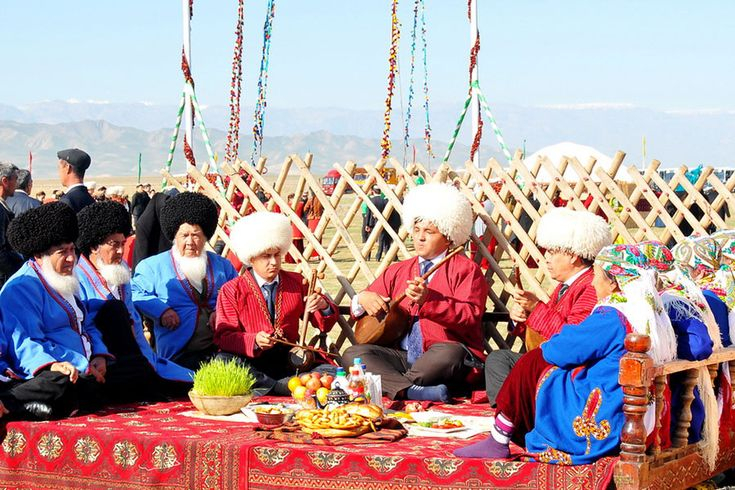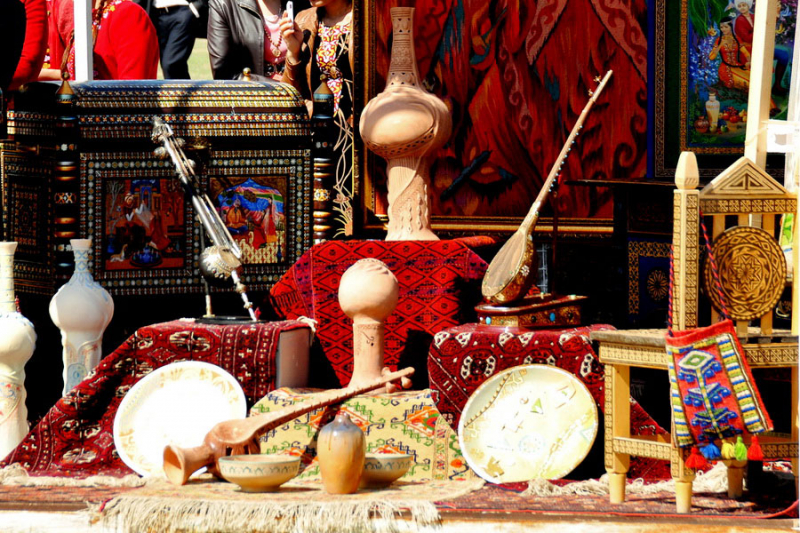Turkmen Folklore
Bakhshi, itinerant musicians and storytellers who have been revered in Turkmenistan for centuries, are one of the most beloved embodiments of Turkmen folklore. Bakhshis were popular among many Turkic peoples during the historic medieval period, and they played an important role in preserving local epics and popularizing Turkmen classical literature. A bakhshi wore special clothing, including a don (thick cotton or wool robe), telpek (black or white wool hat), white shirt, soft leather boots, and wide trousers. Wherever they went, these orator-musicians drank from wells and ate with their own utensils, which they always carried with them. A bakhshi, on the other hand, would not travel alone, but would be accompanied by an assistant who was familiar with his mentor's habits and tastes.
Folk songs were once an important part of Turkmen culture, with separate songs for work and play. While many of these songs can still be heard today, the majority of them have lost their original meaning. For example, centuries ago, Turkmen worshiped a god named Suyt Gazan, who was thought to provide protection and rain. Although celebratory songs sung to Suyt Gazan still exist, they are now only played as children's melodies. Turkmen folk songs are mostly romantic in nature, with separate songs for men and women. Men's songs contain many figurative metaphors, comparisons, and epithets, whereas women's songs, known as lale, recount women's personal feelings and frequently speak of the difficulties of being female.









